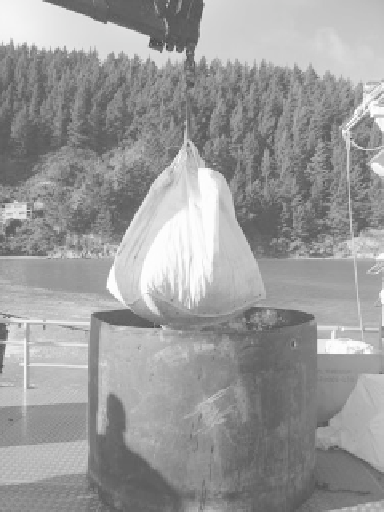Environmental Engineering Reference
In-Depth Information
lime have been successfully used on mussel (Fig. 14.5) and oyster farms to prevent
translocation of pest species such as the algae
Codium fragile
ssp.
tomentosoides
,
Sargassum muticum
and
Cladophora
spp., and ascidians
Molgula
spp.,
S
.
clava
,
and
C
.
intestinalis
(Shearer and MacKenzie 1961; Minchin 1996; MacNair and
Smith 1998; Carver
et al
. 2003; Atlantic Canada Aquaculture Industry Research
and Development Network 2006; Mineur
et al
. 2007). Similarly, a combination
of chlorine baths and sun drying has been effectively used to remove the alga
U
.
pinnatifi da
from infected mooring ropes and chains (Stuart and Chadderton
1997).
During the successful eradication of the black mussel
Mytilopsis adamsi
in
Darwin (Australia), marinas within which the mussels were found were sealed off
from surrounding waters and dosed with ~190t of liquid sodium hypochlorite and
7.5t of copper sulphate, killing the mussels in
<
18 days (Ferguson 2000; Bax
et al
.
2002). Infected vessels also had their internal water plumbing treated by adding
copper sulphate solution and detergent to pipes with standing water. Acetic acid
has also been proposed as a method to manage biofouling pests associated with
shellfi sh aquaculture seed-stock (Forrest
et al
. 2007).
Fig. 14.5
A 500 kg bag of seed mussels being lowered into a chemical bath
containing 0.5% sodium hypochlorite (bleach) solution during industry-scale
trials evaluating methods to reduce the spread of pest species via aquaculture
transfers. Photo: C. Denny, Cawthron Institute.


